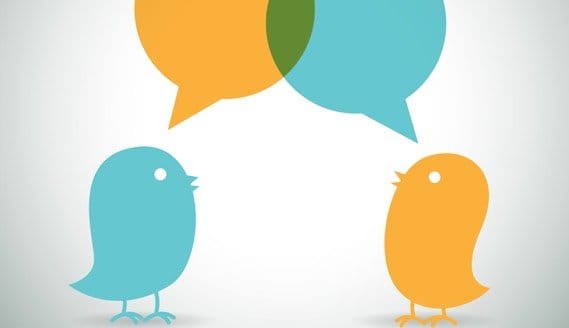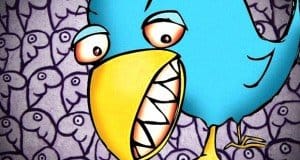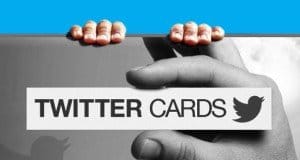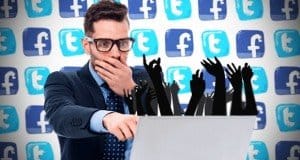How Well Does Traffic from Twitter Convert to Sales?

Twitter can be a great source of conversions, or it can be a public relations nightmare, or it can be a complete non-entity. Which it is for your business all depends on how you use it. When used properly, how well does Twitter traffic convert? What can you do to avoid using it improperly?
First of all, it can be daunting to measure or test any of this. Any numbers you find online are likely going to apply to a small subset of online businesses, and they may not match up to your experiences. You’re going to want to perform some tests yourself to discover if Twitter is worth investing in.
A Look at Shopify
To start out, let’s look at a graphic from Shopify. Their analysis of various storefronts using their system finds some interesting information. First of all, Twitter is third among sources of traffic, behind Pinterest and Facebook. Facebook has two thirds of all referrals, with Pinterest coming in at 13% and Twitter at 10.5%. Likewise, Facebook dominates most industries in terms of conversions. However, Twitter pulls slightly ahead of the pack of the rest. It has a conversion rate of around half of what Facebook has, falling behind a number of other sites.
Among industries not completely dominated by Facebook, Twitter becomes dominant in a handful. These include online retail, home and office furniture, home and garden supplies, and specialty items. Twitter seems best for selling SASS software and apparel.
Don’t let that data discourage you, however. It’s all measured specifically from storefronts using Shopify, which are a small subset of all online sellers. If you’re not using Shopify, the results aren’t necessarily relevant, but they do bring up one general point. Twitter won’t be as good as Facebook.
The reason for this, of course, is that Facebook has such immense volume and such detailed advertising targeting that it’s virtually impossible to out-perform a well-done Facebook campaign. Of course, you don’t have to out-perform Facebook to use Twitter; it’s a supplement, an addition, and they work well together.
A Look at a Semi-Successful Campaign
Fizzle.co presents a case study that involves a Twitter campaign that proved to be surprisingly effective. Here’s how it worked:
- First, he already had an active Twitter account. You can probably set up this strategy on a new account, but it will be slower to get off the ground.
- Second, he used a third party program called Tweet Adder. This program was configured to automatically follow any user who followed one of his primary competitors. This configuration puts your business into the minds and attention of anyone interested enough in the industry on Twitter to follow a competitor; since your offerings are comparable, they should be interested in you as well.
- To avoid a situation where his account blindly follows people who aren’t interested in his business, he set the program to remove anyone his account followed if they didn’t follow him back within a week. Keeping such people on your followed list can be detrimental to usability, among other things.
- To connect with those who did follow him, he set the program to send a direct message to the user within a week as well. This ensures that users know they’re noticed. It also works to present a bit of advertising the same way an email campaign might send a welcome letter after an opt-in.
There are two primary benefits to this strategy. First, it doesn’t clog up the Twitter feed with valueless advertising tweets. All of the advertising is done in a subtle, invisible way. The follows aren’t announced and the direct messages aren’t broadcast. This leaves the feed open for scheduled tweets to build organic engagement.
Second, the program can be left operating 24/7, to attract and gain new users at any time. If you’re setting up such a system yourself, you can even monitor the times of day that you end up getting most of your followers, and use those times to schedule your most potent tweets.
The strategy wasn’t the most effective at conversions for Fizzle, but it resulted in a surprising number of clicks for an automated strategy. If you target multiple competitors with some system for filtering out duplicate follows, you can attract quite a bit of traffic. For a quick, automatic solution, it works very well.
Alternatives to Growing on Twitter
You can do more than just use a basic autofollow strategy and some scheduled tweets to make Twitter more effective. The direct message strategy works, but if it’s not followed up, Twitter will drop off in effectiveness over time. Here are some other ways to make Twitter more effective, in addition to such an automated technique.
- Cater to mobile users. Recent estimates place Twitter at nearly an 80% mobile userbase, even more than Facebook. If you’re not available for mobile users, you’re wasting your time on Twitter.
- Vary your “type” of tweet. That is, there are typically two types of tweet; tweets that copy the title of a blog post, and tweets that include some copy. They both have comparable numbers of clicks, so alternate between them.
- Always include links unless you’re having a direct conversation that doesn’t involve an outside source. When you do include links, consider using a URL shortener with a customization option.
- Use images. When people think Twitter, they often think just basic text tweets, but image tweets are far more valuable. They get more clicks, more favorites and far more retweets. On a site limited to 140 character, a picture’s worth of words is incredibly valuable.
- Use action words like “download now” boost click rates. Users have a subtle receptiveness to the sense of urgency and import that comes with an actionable directive.
- Repost your own tweets when the message is important. If enough time has passed between them – sometimes even just hours – you’re reaching an entirely new audience with the new tweet and will receive comparable interactions.
- Focus on responses. If a user tweets you and never hears back, they’re probably going to unfollow you. People expect two-way communication on Twitter, even with brands. If you can’t live up to that, Twitter probably isn’t the right platform for your business.
 ContentPowered.com
ContentPowered.com





Very helpful stuff, Kenny, and good actionable advice. I understand growing a Twitter takes time, so this is something we’ll have to do slowly.